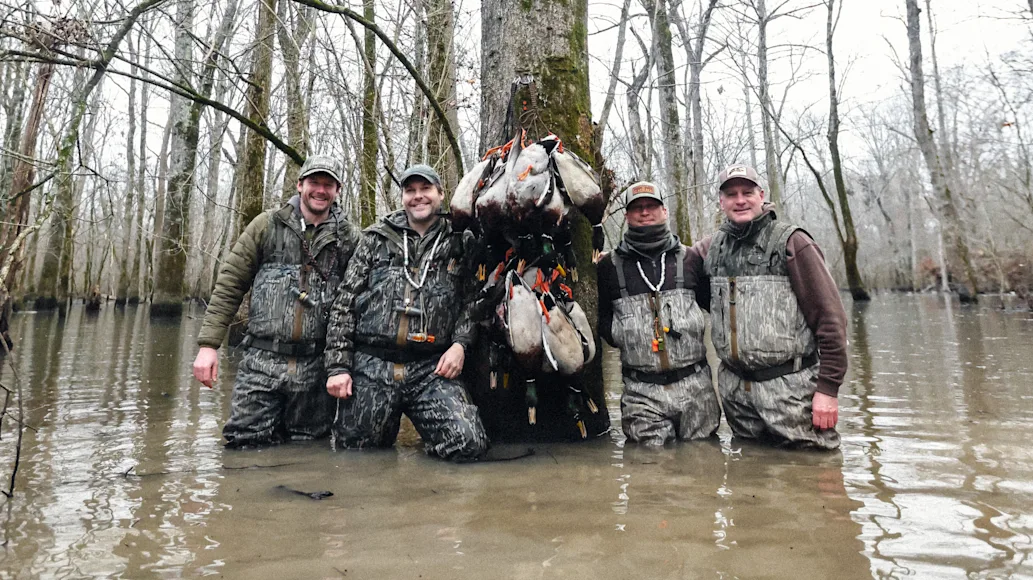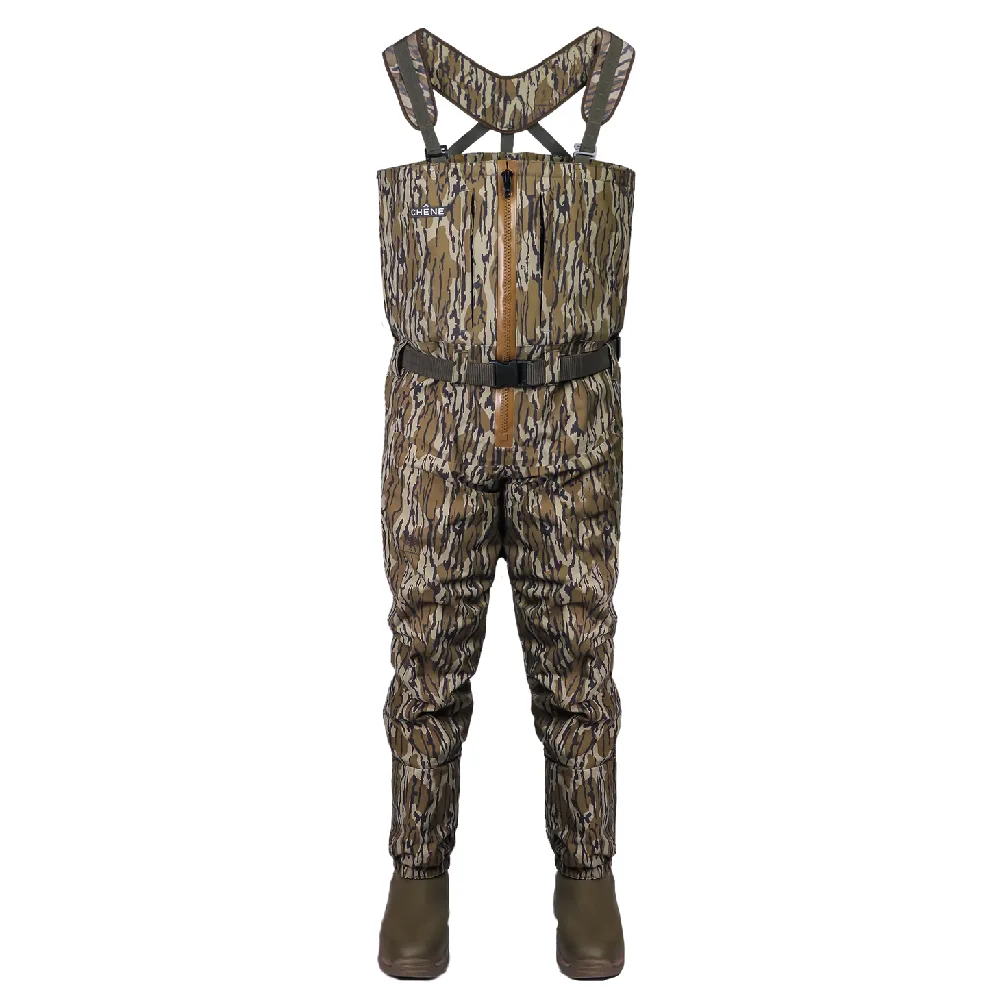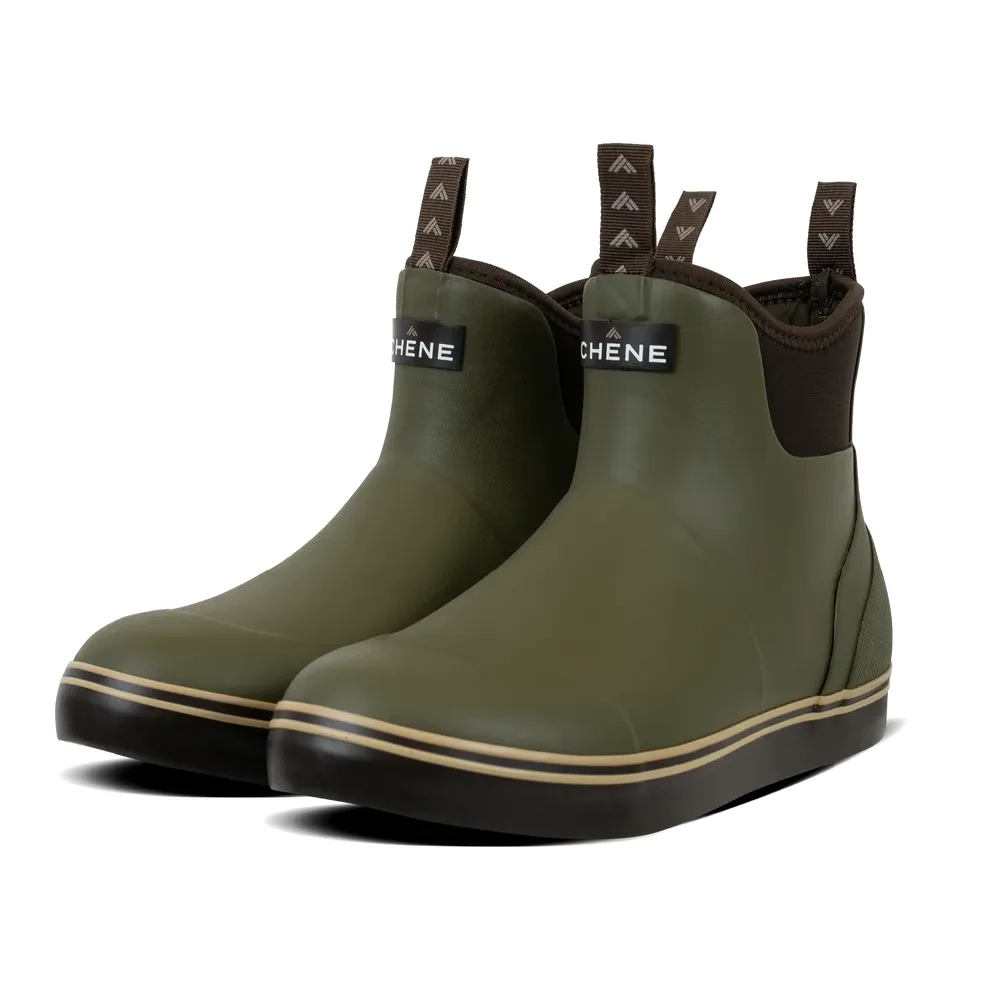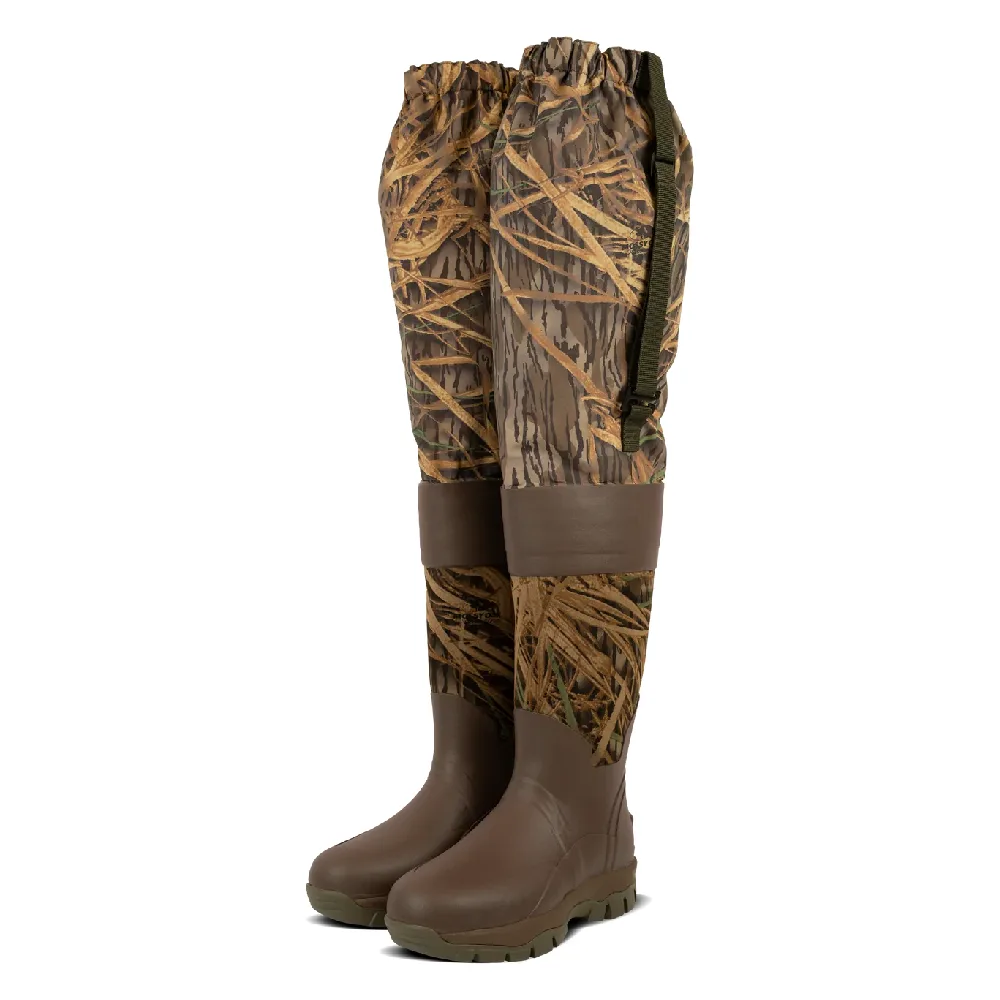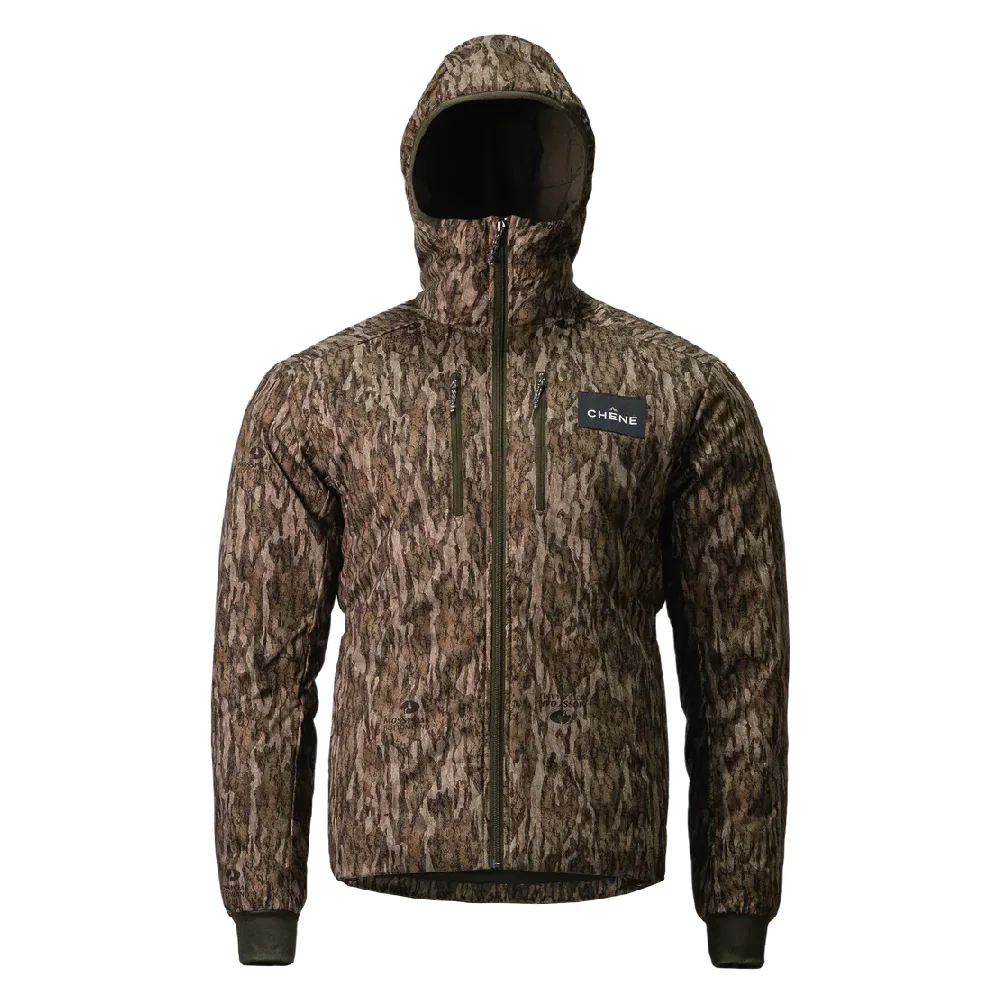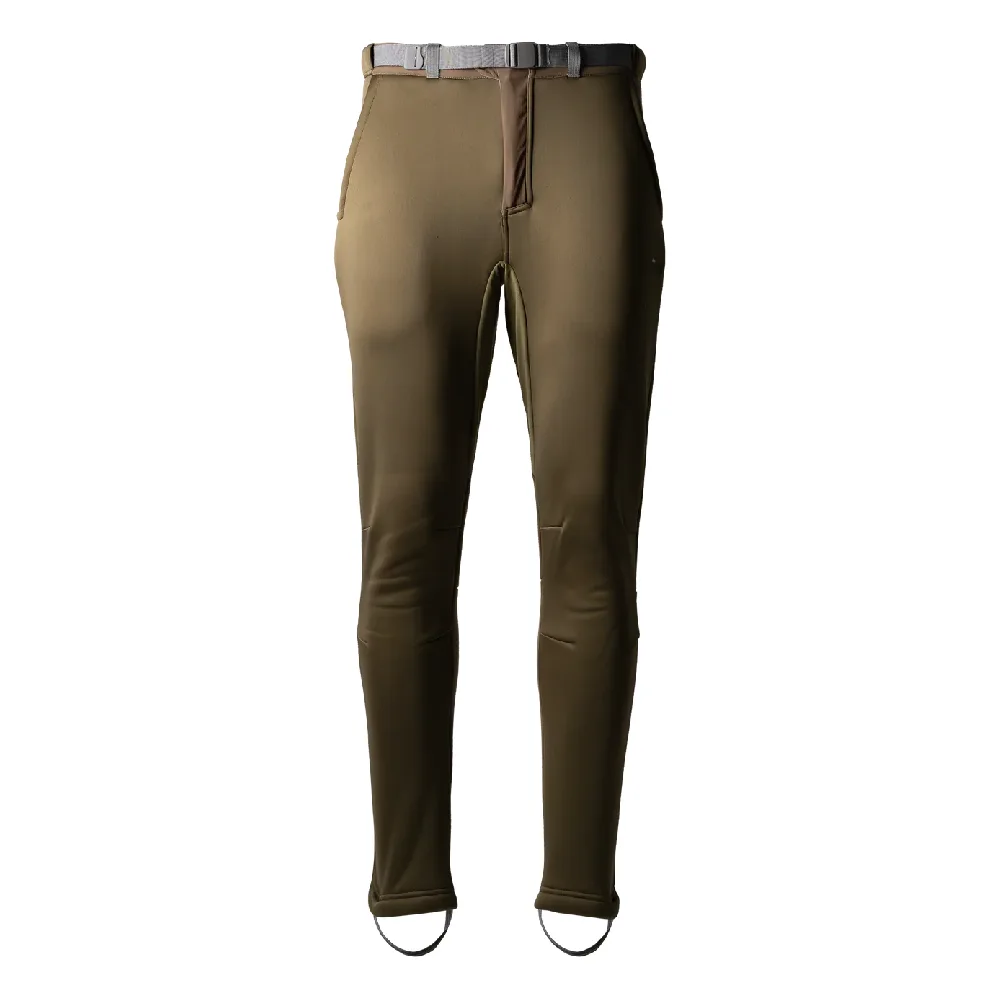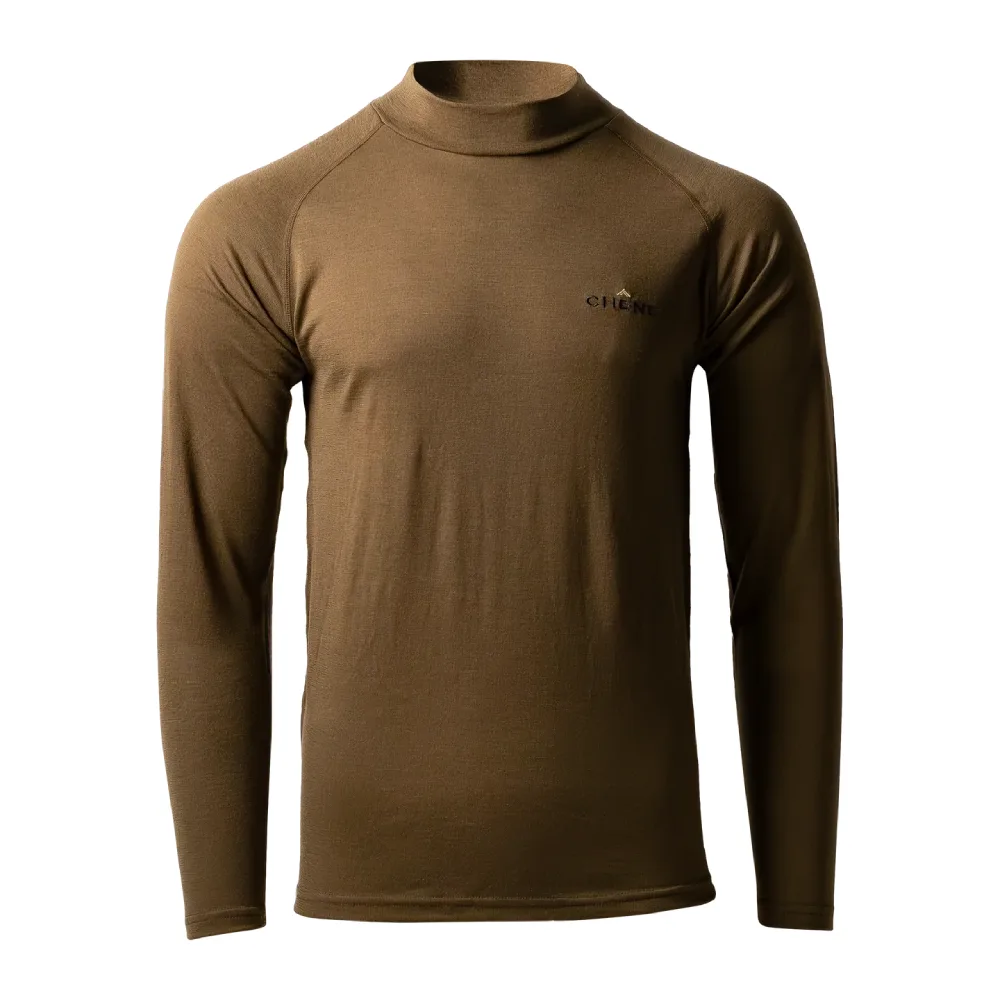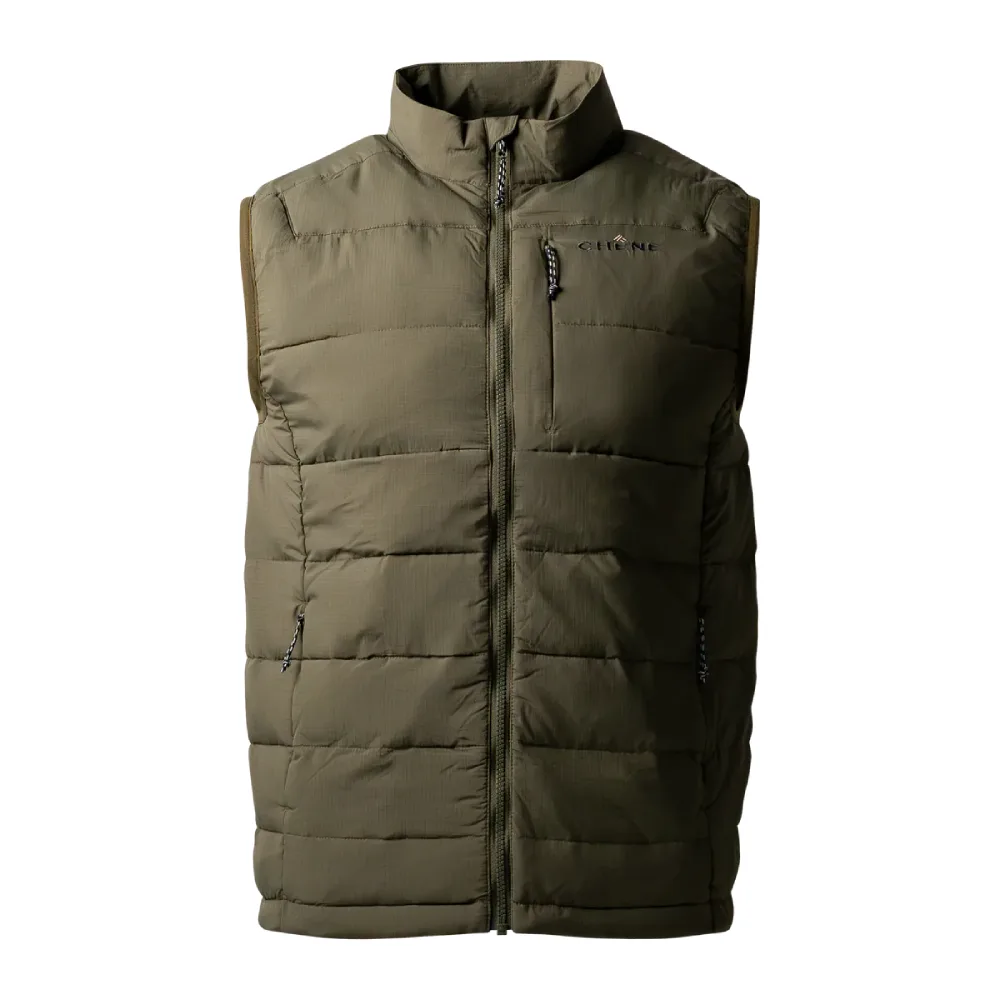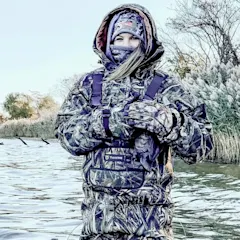We take our gear seriously at F&S, whether it be for hunting, fishing, or camping. Our selections are based on many factors, like quality, price, and purpose—just to name a few. But sometimes there’s more to a fishing jacket or hunting knife than what you see.
Through my years of covering the best outdoor gear, I’ve discovered some really cool brands with some really cool stories doing some really cool things. In our new “Behind the Brand” interview series, we are telling those stories through the words of the founders themselves.
There are regular waders, and then there are Chene waders. Ask anyone who's worn a pair of the $1,100 waders (including plenty of Field & Stream staffers), and they'll agree that they're just built different. Or, as the Chene tagline goes, built better. Chene's rise in the hunting industry isn't born of good luck or coincidence—instead, it comes from years of development, field testing, hard work, and, above all, passion.
That passion was evidenced when we had a chance to chat with Chene founders Jeff Jones, Field Norris, Jeff Farmer, and John Strange. The four men opened up about their love of all things waterfowl, how it led to the creation of Chene, and how the iconic wader came to be. They even shared some of their best tips and advice for fellow waterfowl hunters. One thing's for sure: These guys know ducks—and they know waders.

Field & Stream: Going back to the beginning. How did Chene start?
Chene: All four of us in one way or the other had built a life around waterfowl. We were different than your average weekend warrior. A lot of our livelihoods and lives really centered around waterfowl and not just during duck season. We all had roots much deeper in the waterfowl industry and in this part of the waterfowl world than just being hunters.
We were pretty unsatisfied with what was out there. There were good products and good companies, but the truth is we were just wet in our waders. There was no solution. Sure, there were great brands that would honor warranties and fix them, but the turnaround time to fix those products was exceptionally long. You'd end up having to buy several pairs of waders.
So how did you create the idea for the waders?
Jeff Jones is a product genius and he said, I believe I can make something better that will last longer. So we really challenged how things were built and how things were constructed. We did so with a mindset not focusing on our margins and our cost, but focusing on the end product. We believed if we actually built a product that would hold up to the tests of avid hunters like ourselves—and that we could provide the right customer service and create bonds with the customers—that we would win fans over even if we were at the very upper end of the price zone7.
That was something we all agreed upon from day one. We never had an interest in building a Ford. We were interested in building a Mercedes from day one and so we were all very united in that.
We really wanted to focus on two things: super high quality products and super high quality customer service. Out of that unity in our vision for what we were and how we were going to start, we kicked this thing off in in 2021. And now, here we are. We're new at it, but when we say customer service, we also mean customer engagement—connection, feedback loop, everything. Everything we do here centers around that consumer engagement piece.

What makes Chene waders different than anything else out there?
It's just a really different style wader that wasn't in the hunting market before. A couple of different things make it unique. The fit to the waders has always been crucial. Historically, in waterfowl and the general hunting industry, waders were built for two sizes: stout and regular. If you were my size (5-foot-8 and 160 pounds) and you have a size 10 foot, you were wearing the same size wader that a guy who might be 6-foot-4 and 280 pounds. All because you both wear a size 10 boot.
It's really simple to just base waders off foot size and two body sizes, and that's kind of what everyone in the market had always done. There's a big commitment to having all of these sizes. But we took the complexity of building unique fit to body and then a unique fit to foot. So you have a wader that's built better because it fits you better and you won't tear it up.
Moving on to the materials. Traditionally, waders are built out of polyester. It's easy and fast to run that fabric, and there's less cost to it. We wanted a wader that was tougher and stronger. There's no denying the tensile strength of a nylon wader, so that's what we built ours out of. There's a slower, longer, more expensive print time to it, but it also afforded us the freedom to manufacture the waders different.
We don't sew our waders. This makes the fabric stronger and makes your seams stronger. They hold up better. You're not punching holes in the material that you later have to try to fix, so truly it is a different process than anything else out there.
You talk a lot about customer service. How does that play out for wader repairs?
We weren't the first ones to be able to make a sustainable wader that was repairable, but what we were was the first company that said we'll do it ourselves. We'll bring it in-house and we'll do it here at our shop,.
Our commitment is a 7- to 10-day turnaround on an incident that happens. Sometimes it takes longer. It just really depends on what has happened. But our goal is this 7- to 10-day deadline to get it back to the customer. Because look at the guy who's an accountant working Monday through Friday in the office. He only gets to hunt on a Saturday and Sunday. If he goes out on a Saturday and has an issue, we want to be able to get it back to him so that that when next Saturday comes along, he doesn't miss a day of hunting.

When did you start putting out other products aside from waders?
We developed and tested a bunch of apparel leading into it, but we really wanted the company to focus on—and be known for—building that wader. It solved the problem and it was such a different wader than was on the market. We really wanted to get the word out and get the momentum behind it the first year.
I remember during the first season, I started getting calls from people saying, man, this boot that y'all put on your waders is like no other boot I've ever worn—I can stand in a pit all day long and my feet don't hurt. So we realized there was a huge opportunity to take that boot and put it on a knee boot. Our knee boots have really taken off because of how comfortable a boot it is.
What are your favorite Chene products outside of the waders?
The most popular product by unit is the Scout boots. There was really a debate whether we should go into that when we first started talking about it, because it's not something you're actively wearing while duck hunting. It was a little outside of what we had done to date where every product was hyper waterfowl-focused, and there were a lot of competitors making a similar type boot.
But Jeff built a boot the same way he built our waders: He said, I can improve upon what's out there. We spent more time, effort, and energy on building a higher quality boot, and the market quickly noticed it. We're just getting to the point where we're finally wrapping our head around the volume of sales and trying to get ahead of selling out. We have not been able to keep them in stock.
It exploded in popularity and that was in response to the quality of the boot. It's a product that a lot of duck hunters use either after the hunt or on the farm or the other 10 months of the year.
One of the products we created based on a need we heard about constantly is the Slough boot. It's basically a knee boot that functions like a knee boot, but then pops up almost to a hip boot height. That's one of my favorite products because I find it useful all year round for all the stuff that goes in to the love of the land and conservation leading up to duck season. I use that boot all the way into teal season, and then sometimes in the boat or in the blind duck hunting. Then during turkey season, it fits the need because you're walking long distances sometimes and your turkey is gobbling on the other side of a slew and you just need to cross it.
This is an extremely high quality, highly technical, very versatile hunting jacket. It's extremely warm, and covers almost all aspects a hunter needs. It regulates your body temperature, so it works as well in milder weather as it does in super cold temperatures. It comes in tons of colors and camo patterns, so it can really meet the needs of a lot of hunters.
As a waterfowler, the sherpa fleece wader pants are the best product. We kind of ignore them around here, but we all wear them almost every day we hunt. They're incredibly warm. The only knock to them, quite frankly, is that during the early season when it's still warm out, they'll kind of burn you out. But these pants came out early for us and it was our answer to why we don't need insulation. There's a lot of very good technical reasons we don't want insulation on our waders, so we built these pants to go with them. Of the 58 days of the season I hunt, I suspect I'm wearing these 55 of them.
It's really cool just to show people how warm Merino wool will keep them, and how functional it is. They'll feel it and say, oh man, this is thin, there's no way it'll keep me warm. Then they wear it in the field on a bitter cold day as a base layer, and when they come back in, they're like, you're right, that is the most comfortable, warmest product I've ever worn. This base layer is something you could wear year round. It's 100% Merino—there's not many companies that will make anything all Merino anymore—and it just works phenomenally.
The Flyweigh vest goes back to when down was first being put into garments. It's very warm when worn as a base layer. So we cut that vest and we built it to be worn as a second layer on top of the Merino layer or on top of a T-shirt, underneath your jacket. It is completely different. It completely changes the way it functions when you wear it as a base or mid-layer instead of an outer.
Morgan's Mama's Food
These guys are going to think I'm crazy when I say this, but every weekend, our number one item is Morgan's mama's food. Everybody who does business at Chene knows a lady named Morgan. She's head of customer service, and she's awesome. We put this cooler in the store full of Morgan's mama's food for guys coming through here on Fridays, Saturdays, and Sundays. And it sells out. People come by here to get the food to go to duck camp to cook and so Morgan's mom is constantly filling that cooler full of stuff.
How did you come up with the name Chene?
We were trying to figure out a common denominator, something we all love. Someone threw out the French word for oak and it just landed. It hit because our area has such a heavy French influence. We all grew up hunting the flooded timber in Arkansas and the Mississippi Delta, the Bayou DeView, the Lagrue, the Cache River—all these river systems were originally settled and hunted by French fur trappers.
So it was the combination of the geographical location, what we all know and love, and the flooded oak trees that we hunt (and that we dream about hunting when we're not). It was just unique.
Tell us about the new Stuttgart store. How did that happen?
We were really blown away with the volume of sales we were doing out of our shop in Memphis, which was a tiny little showroom in an industrial manufacturing area. So we started thinking about other options and I went on a hunting trip to a real nice hunting club down in Stuttgart. Stuttgart is the heartbeat of waterfowl in Arkansas.
It is in the middle of hundreds of thousands of acres of public land. There's so much history, so many great clubs. We thought, golly, if we're really going to call ourselves a waterfowl hunting brand and we want to create bonds with the customers, we need a location in in Stuttgart. So we, we decided to build a store there. The Chene Stuttgart location opened in November 2024.
And it's not just a simple retail destination. We dedicated over a third of the of the non-warehouse space to be a hangout space. We have a lounge area with TVs and a massive wood-burning fireplace, and there's a permanent food truck parked outside so you can come get your breakfast before you hunt. Or come after your hunt, sit down, watch a ballgame, have a beer, and just get to know us and enjoy the enjoy the camaraderie of a duck camp.
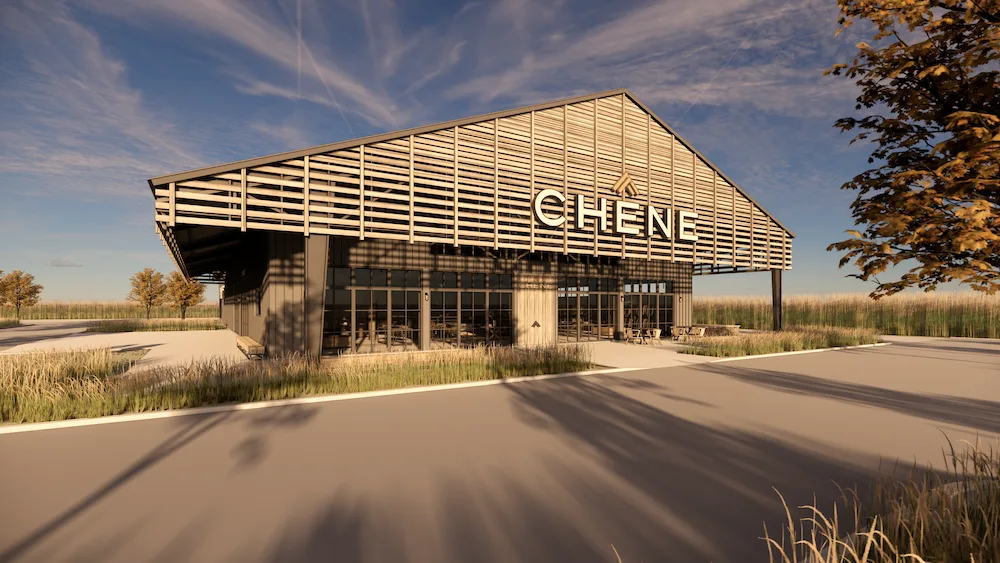
Last question: What's your best advice for hunters of any experience level?
Everybody's a great hunter on a sunny day, so if you're not sure what you're doing, go hunting in the sunshine. It covers up a lot of mistakes. A bad caller turns into a good caller on a sunny day.
Have some patience. Be patient with the people that are out there with you , especially on public ground. Try to remember we're all out there to have a good time, to escape work, to get away from it and to do what we're passionate about and what we enjoy. Take that moment to realize it's not a battle between you and that next guy that's maybe a hole or two over. We're all trying to work together and enjoy the day. Those good waterfowl days are kind of far and few between, so just really try to enjoy the days when you're out there. Don't focus on the kill—focus on the experience of being out there.
Talk less and listen more. If you ask for advice, you'll learn a tremendous amount of things, not just about how to be a better hunter or how to approach certain situations, but what the whole experience is all about. Get to know folks. A lot of the bonds and the relationships that we've created starting as kids are still around today. It's a pretty neat community and it's easy to access. Everyone is very welcoming.
It's not so much about the hunt, it's more about the people you're with, the friendship, the camaraderie, the talking about getting your decoys together. It's more about the fun times you have with your friends and building relationships that take you throughout the rest of the year. It's not just the 60 days of the season that you go to hunt stuff.


